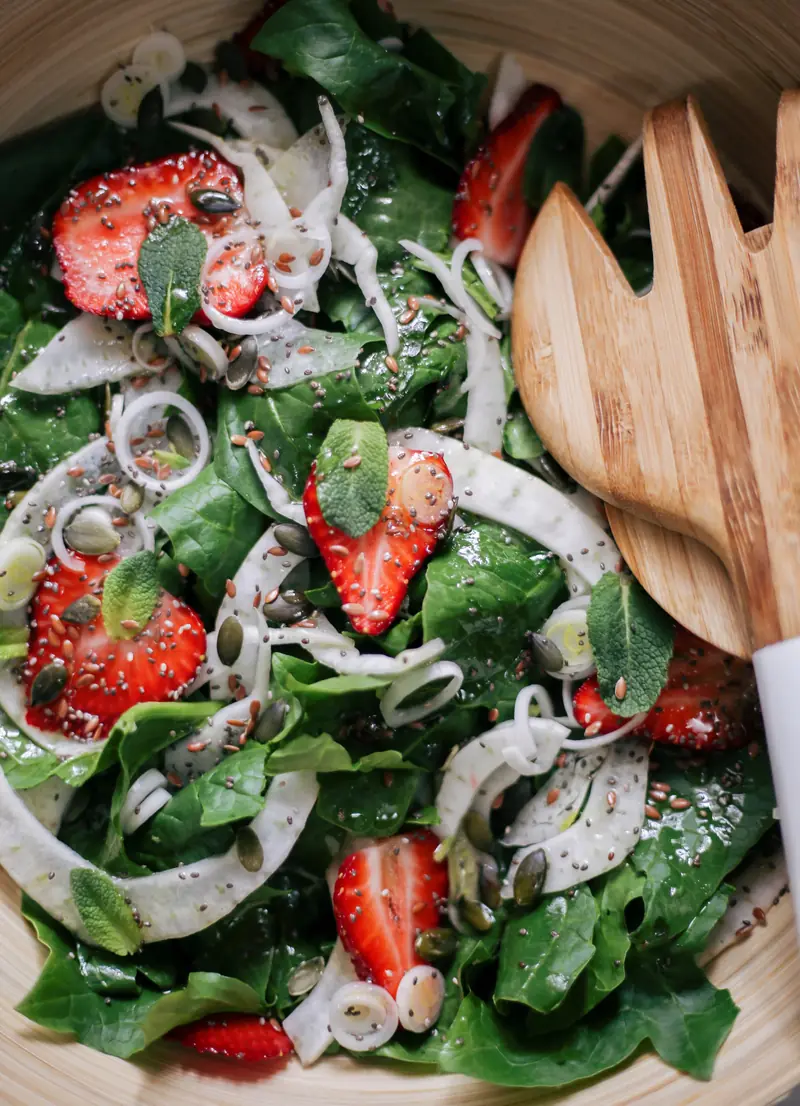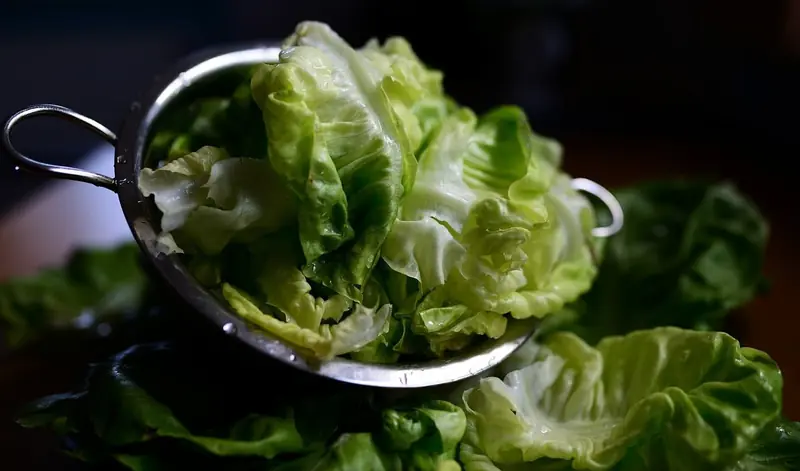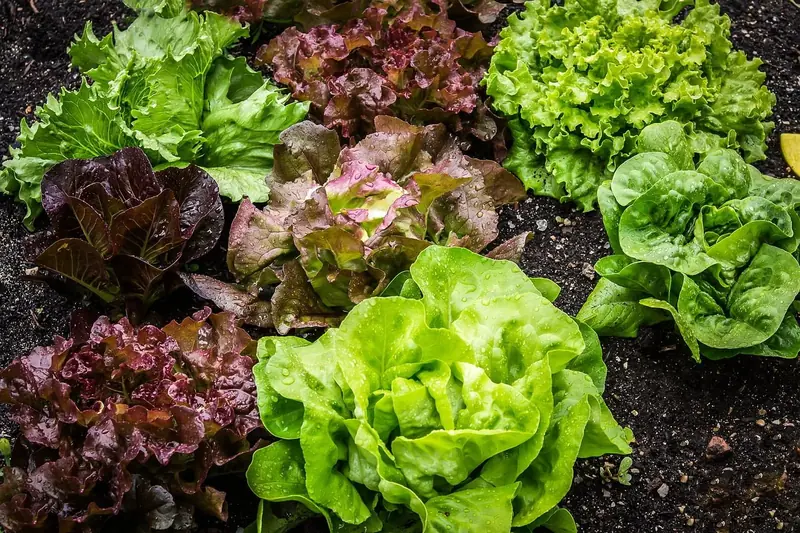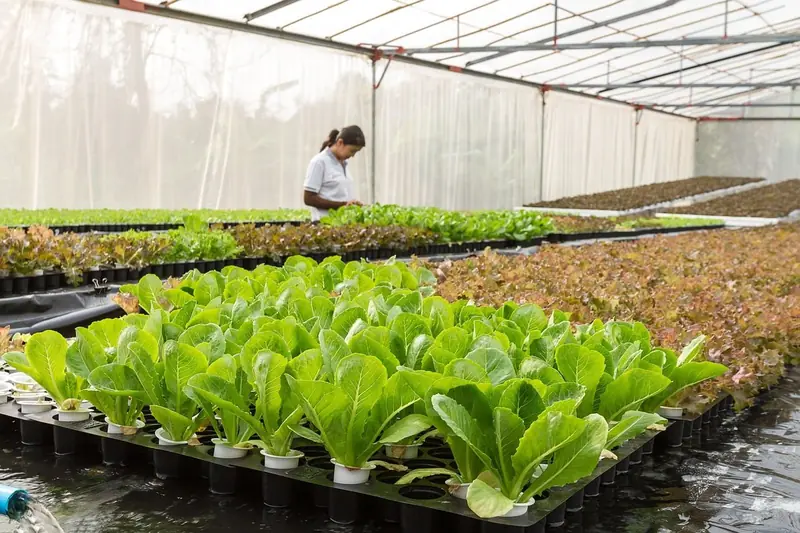
Ranked as the “silver medalist” for mineral content among all vegetables (with spinach taking the top spot), lettuce leads the way in calcium levels. Its exceptional vitamin and mineral profile, along with its low maintenance and decorative appeal, has made this leafy annual a favorite among gardeners, chefs, and nutritionists alike.
The History of Lettuce
The relationship between humans and leafy lettuce dates back 5,000 years. This connection began with the seeds: our ancestors learned to extract oil from them long before they ever tasted the greens themselves. The ancient Greeks were the first to consume the leaves, appreciating their medicinal properties as a “cure for wine.” This knowledge was also beneficial to the Romans. In Ancient Rome, cultivating the plant known as Lactuca was a family affair passed down from father to son.

The personal physician to several emperors, the ancient Roman physician Galen, prescribed lettuce to his important patients for a sound sleep, referring to its juice as “healing milk.” A source from the reign of Domitian (81–96 AD) describes the Roman tradition of serving lettuce leaves before meals, typically eaten raw or pickled, dressed with olive oil and vinegar.
Lettuce was also used as a symbol of the transience of beauty in an intriguing seasonal ritual celebrating birth and death. In honoring the goddess of love (Aphrodite in Greek mythology, Venus in Roman tradition), the Greeks and Romans also paid tribute to the hero of her tale—the young pagan god of spring, Adonis, who was slain by a rival. One element of his cult involved the so-called “gardens of Adonis”: people would carry baskets or pots filled with planted lettuce during processions, symbolizing the bloom and decay of nature.
Lettuce became widely popular across the European continent in the 14th century. It is known that in 18th-century Germany, leafy lettuce was prepared for serving while the chefs wore white gloves. However, they had to remove the gloves each time to mix the leaves by hand, as using kitchen tools and utensils was not allowed to preserve the dish’s flavor. European varieties of crisp-leaf lettuce were pickled in a hot mixture of oil and vinegar.

Garden Bed or Flower Bed?
Perhaps the most beautiful type of leafy lettuce is the so-called coral variety. This includes the exceptionally aesthetic Lollo Rosso, with its red, curly leaves that can transform a garden into a flower bed. At the same time, its slightly bitter greens with a nutty flavor hold high culinary value—just like the green leaves of the related Lollo Bionda variety, which have a more delicate taste. Both types of lettuce pair well with grilled meats, roasted vegetables, and cheesy sauces.
Batavia lettuce features a large rosette of crisp leaves with wavy edges and a sweet flavor. In culinary applications, this visually appealing plant complements fatty meats well. This leafy lettuce can also come in two colors, but its more delicate leaves are the red-brown ones, not the green.
Another striking variety is oak leaf lettuce, easily recognized by its intricately lobed red-green leaves resembling those of an oak tree. This garden decoration will catch the eye both in the garden and on the plate: it is served with vegetable garnishes, mushroom dishes, and meat or fish appetizers.
Rapunzel, also known as mâche, corn salad, or lamb’s lettuce, has a very decorative appearance. Its small, dark green “tongue” leaves resemble flower petals and are considered an aphrodisiac. Dubbed the “date salad,” it has a delicate aroma and a barely perceptible spicy note in its sweet-nutty flavor. Even the young roots of field salad are edible, resembling radishes. Today, this beneficial plant is grown as microgreens, whereas it was once considered nearly a weed.

Diversity of Varieties
Head lettuces form a compact head, while leaf lettuces grow in a bush or rosette shape. Most lettuces are cultivated for their leaves, but in some varieties, the stems or seeds are valued. In most leaf lettuces, the leaves and heads can only be eaten raw until the stem begins to develop, after which they become bitter and require cooking. Depending on their flavor profiles, lettuces can be soft, crunchy, spicy, bitter, or peppery.
Crisp lettuces include iceberg, while romaine is an example of a spicy leaf lettuce. The most well-known buttery lettuce is butterhead. Bitter varieties include chicory lettuces, whose roots have replaced expensive coffee beans for Europeans since the 17th century. Watercress has a sharp taste reminiscent of horseradish, making it a zesty condiment for smoked fish, poultry, or bacon. Arugula has a peppery flavor that pairs well with cheeses, tomatoes, balsamic vinegar, and olive oil. The sourest leaf lettuce is sorrel, commonly used in soups, salads, and fillings.

Over 1,000 varieties and hybrids of leaf lettuce are grown worldwide, with the oldest being the common lettuce. This variety alone includes at least 100 subspecies, differing in size, color, and leaf configuration, and is typically what is meant by “leaf lettuce.” More than half of the global production of lettuce is grown in China, with Spain and the U.S. being the largest exporters of this product.
Raw lettuce leaves are traditionally used in sandwiches and as a “bed” for dishes. Their best companions are lemon juice and vinegar, mayonnaise and sour cream, vegetable oil, and nuts. Lettuce is a culinary “classic”: its neutral-tasting leaves contain neither acidity nor bitterness, making it a harmonious component in any combination with meat, cheese, other vegetables, and herbs.

Proven Benefits
Lettuce is a low-calorie food (16 kcal/100 g) with high nutritional value. The joke about salad leaves for breakfast among models is not far from the truth: nutritionists recommend starting any meal with leafy salad, as it stimulates gastric juice secretion and significantly speeds up metabolism. Additionally, lettuce is recommended by cosmetologists for maintaining skin health. Crumpled leaves applied to the face can act as a sunscreen. Salad masks and infusions nourish, tone, and refresh dry skin.
Lettuce is rich in nitrogenous compounds, beneficial sugars, and carbohydrates, and it also contains plenty of water, starch, proteins, fats, and dietary fiber. The leaves are packed with folic and nicotinic acids, vitamins B1, B2, B6, B9, C, E, K, H, beta-carotene, choline, calcium, potassium, zinc, magnesium, chlorine, phosphorus, selenium, iron, sulfur, and ash. This composition allows leafy lettuce to positively influence reproductive function, maintain water-salt balance, regenerate bone tissue, preserve sharp vision, improve blood clotting, normalize blood pressure, and lower cholesterol levels.
Lettuce provides benefits thanks to alkaloids that promote alkalinity in the body. It is an important food product in the diet of people with diabetes. Lettuce activates gastrointestinal function and boosts metabolism. The presence of the unique substance lactucin gives the plant its calming effect, which benefits the central nervous system and improves sleep. Studies have shown that daily consumption of 100 g of leafy lettuce reduces the risk of developing Alzheimer’s disease.

While the hypoallergenic nature of lettuce is an advantage, it is advisable not to exceed the daily dose of 100 grams: excessive consumption of this high-fiber product can lead to bloating and digestive upset. People with digestive system disorders should approach this product with caution. Doctors recommend excluding lettuce from the diet during flare-ups of gastritis, stomach ulcers, or duodenal ulcers.
Storage and Serving
To protect delicate greens from spoilage and wilting, low temperatures are essential. Washed and dried leaves should be placed in the refrigerator. When storing in a plastic bag, the lettuce should be dry; otherwise, it will quickly rot. Conversely, if the leaves are placed in a container covered with a damp towel, they will stay fresh longer (up to four days). The freezer is not suitable for storage, as lettuce does not tolerate freezing. However, it will enhance its crispness when submerged in cold water before consumption.
If you want to extend the life of this product, buy potted leaf lettuce from the produce section. It is sold in a clear package resembling floral wrapping and looks like a bouquet or a houseplant. Typically, premium-quality leaf lettuce is available in pots. Generally, this is buttery lettuce—its leaves feel oily to the touch, as if coated with a thin layer of oil. This effect is noticeable even when rinsed with water.
The packaging indicates the expiration date and storage conditions. Potted leaf lettuce seems convenient for preparation, as it is always fresh and can be used in parts. The juicy leaves with a crisp core easily separate from the head, remaining whole and undamaged. Interestingly, leafy lettuce is better torn by hand than cut. Home cooks appreciate its firm texture, which helps maintain the appearance of buttery lettuce when mixed with other ingredients.

The sweet flavor of this green pairs well with seafood, seaweed, avocado, cucumber, and sesame. Meanwhile, bland lettuce combines successfully with mustard, garlic, onion, pepper, as well as tomatoes, walnuts, eggs, meat, or fish. In recipes using leafy lettuce, chefs emphasize that it should be mixed with other ingredients while dry, and dishes with fresh leaves should be dressed just before serving, as the leaves quickly lose their appearance and flavor when dressed.
Growing Secrets
Overall, this cold-resistant, light- and moisture-loving crop is considered low-maintenance, as you can grow a harvest of vitamin-rich greens from seeds even on a windowsill. Before planting leafy lettuce in the garden, ensure that the local soil is suitable. Heavy and clayey mixtures are not suitable for lettuce, nor will it thrive in saline or saline-alkaline soils with acidic reactions.
Seeds of leafy lettuce are sown in open ground from May to mid-June (the soil at a depth of 5–7 cm should warm up to +10°C). The planting should not be deep: if buried too deeply, the lower leaves will rot and become susceptible to fungi. During planting, you can fertilize the beds with a small amount of phosphorus or potassium fertilizer. An excess of fertilizer can be just as harmful to plant development as a deficiency. Specifically, an overdose of nitrogen sharply increases the nitrate content in leafy lettuce.

When watering, avoid wetting the leaves (to prevent fungal diseases), and during hot weather, plants will need daily watering (in cooler weather, watering can be done every three days). Seedlings appear about a week—on the 8th to 10th day after sowing. If lettuce is sown in winter, it will grow too quickly in spring and flower. This is not ideal, and here’s why.
According to the technology for growing leafy lettuce, it must be harvested before flowering begins. This condition is crucial because the bolting process makes the leaves bitter, rendering the lettuce unsuitable for sale. For this reason, plants intended for consumption are not meant to reach maturity. Depending on the variety and the length of the growing season, their life typically ends with the harvest 65–130 days after sowing the seeds.
